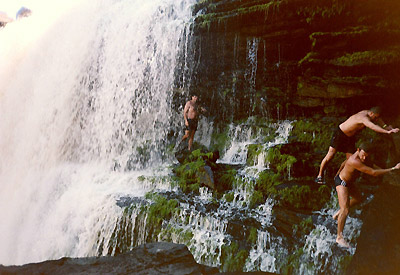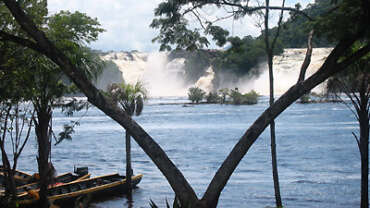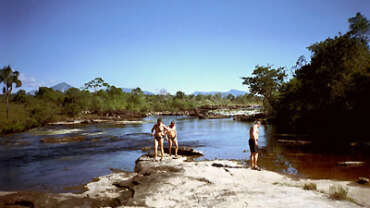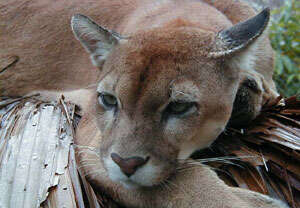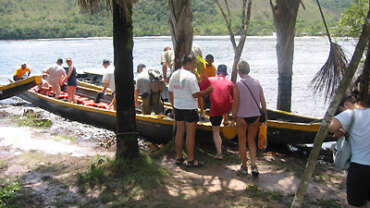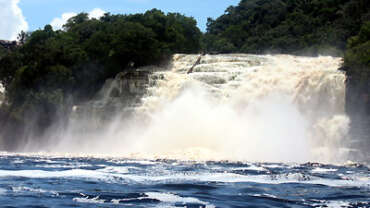Los Llanos
The Llanos, (plains) are the vast savannas stretching west from the Orinoco Delta to the Andes mountains and south into Columbia. Encompassing the states of Portuguesa, Cojedes, Arauca, Barinas, Guárico and Apure, the plains occupy some 300,000km² (1/3) of Venezuelan territory. They consist of both high and low plains, and are primarily grasslands dotted with woodlands and streaked with rivers, all of which empty into the Orinoco basin. The high plains, broken by hills and mesas, cover the eastern and central areas near the Andes, and the low, flat plains occupy the western and southern regions towards the Orinoco Delta. However, tourists usually visit the high plains within the Apure and Barinas states; it is this area that is referred to as Los Llanos. Within this vast area are three national parks: Río Viejo, in the western Llanos near the Andes, Aguaro-Guariquito, in Guárico State and Cinaruco-Capanaparo in the eastern region of Apure State. Together the parks encompass a total of 1,250,000ha.
Flora and Fauna
Los Llanos is a fantastically biodiverse region, and the variety of wildlife is one of its main attractions. Some 350 species of bird and over 50 species of mammal populate the three principal habitats: wetlands and waterways, gallery forests and savannas and sand dunes. Within the wetlands and waterways are osprey, herons, storks, egrets, spoonbills, muscovy ducks, scarlet ibis, kingfishers and cormorants; capybara, otter, manatee and freshwater dolphin; caiman, turtles, water snakes, anaconda and piranha. Gallery forests border the riverbanks and are home to macaws, caciques, turpials and hoatzin; ocelot, capuchin and howler monkeys; giant tortoise, iguanas, fer-de-lance and boas. Fauna of the savanna includes hawks, falcons, buzzards, eagles and vultures; jaguar, puma, savanna fox, anteater, mountain cat and vampire bat.
The climate in the Llanos is extreme. Heavy rainfall occurs between May and December, and the air becomes heavy and humid. The rivers rise and burst their banks, flooding the entire lowland plains. In January, the dry season begins. The humidity gives way to dry winds, the floods recede and the land is baked dry. The average annual temperature is 27ºC.
History
Life in the inhospitable, wild territory of the Llanos contrasts sharply to that of Venezuela’s modern cities. The harsh lands of this vast region are inhabited by few, and house just 10% of the country’s total population. The first settlers arrived in the mid 1500s, after explorers ventured into the plains in search of El Dorado, the mystical city of gold. Before long, Catholics arrived and set up missionaries, which later expanded and developed into towns. The colonization of the Llanos gave birth to a new people, the Llaneros, whose ancestry was a blend of Indian, African and Spanish blood. During the Wars of independence in the early 1800s, the Llaneros made a considerable contribution to the fight for liberation, and their boldness and bravery made them a feared enemy of the Spanish.
Tourism
Excursions to Los Llanos are offered by numerous agencies. Due to the isolation of many camps and ranches, tours tend to be all-inclusive, with accommodation, transport, food, entertainment (singing and dancing the joropo) guides and excursions into the surrounding territory by jeep or boat. These need to be booked in advance. Some packages offer horse-riding or white-water rafting. There are excellent opportunities for photography, and watersports are available. 3-4 day tours can be arranged in Mérida, San Fernando de Apure and Caracas. Some tours do not cater for children under 12, owing to the nature of certain activities. Parts of Los Llanos are accessible by paved roads from Barinas and San Fernando de Apure, others by dirt road only, for which a four-wheel drive is necessary. There are also several airstrips. Access to Río Viejo National Park is by boat, Aguaro-Guariquito can be reached overland from the towns of Calabozo, Calvario and Cazorla and Cinaruco-Capanaparo from San Fernando de Apure. It is better to visit the lowland plains during the dry season, as extensive flooding in the wet season restricts access to much of the plains, and less wildlife is visible. Those wishing to drive into the southern part of region are advised to avoid the roads in the vicinity of the Colombian border, due to guerilla activity.
The People of Los Llanos
For years, the hardy Llanero cowboy has been an icon of Venezuelan folklore, symbolizing the qualities of courage, independence, strength and individuality. Today, the Llaneros work their ranches using traditional methods and make a living as cattle herders. They share their territory with the Yarubi, Guajibo and Kariña Indians, and still enjoy singing and dancing to the music of the famous joropo, whose origins lie in this very land. Often referred to as musica llanera, the joropo is Venezuela’s national dance, and is a rhythm accompanied by improvised vocals, harps, small guitars and maracas. The joropo is often performed for visitors.
National Parks of Los Llanos
Río Viejo · Aguaro · Cinaruco
Within this vast area are three national parks: Río Viejo, in the western Llanos near the Andes, Aguaro-Guariquito, in Guárico State and Cinaruco-Capanaparo in the eastern region of Apure State.



